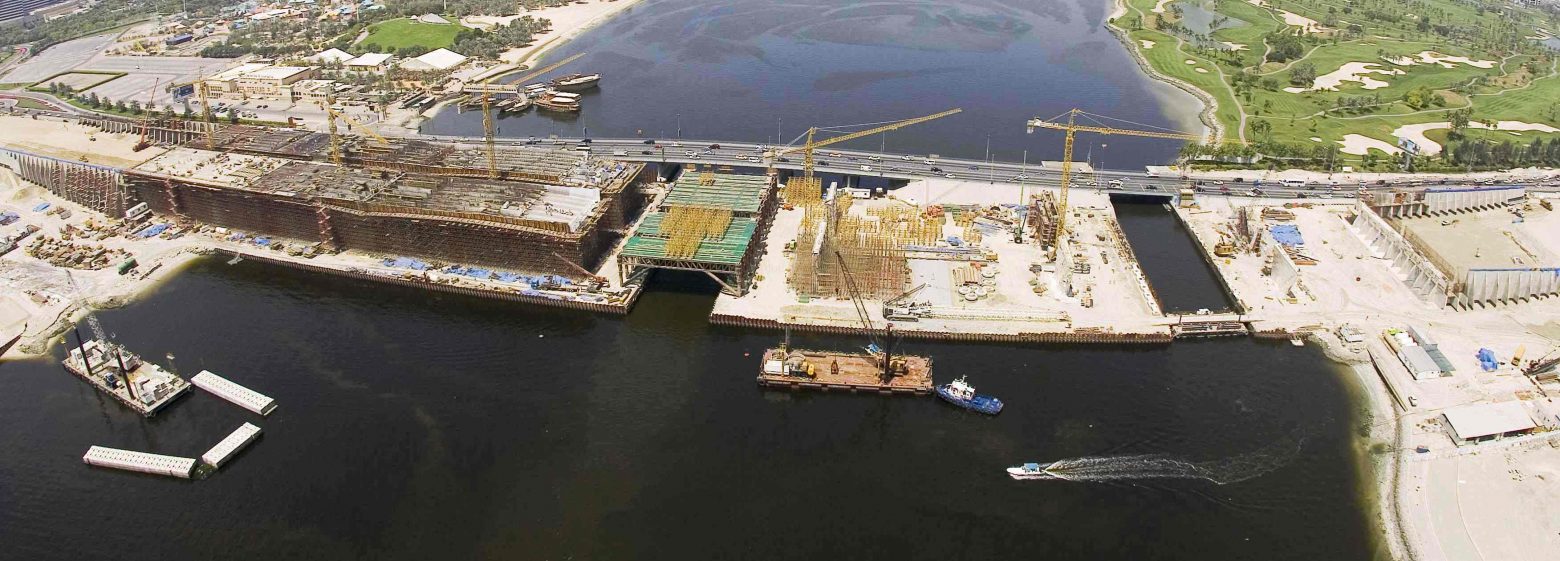
Temporary Works
Steel sheet piles can be utilized for temporary soil and water retention applications, with profiles and lengths to suit anything from the smallest to the biggest task.
Steel sheet piles can be driven, extracted and reused many times, making them a top solution in terms of circular economy and environmental life cycle considerations.
Steel sheet piles have been used for temporary applications for decades because they save time and money on site. Given the reusability of these sections, there are several business models to optimize the economy of a project: sheet piles can be rented, purchased for re-sale or for buy-back at the end the project, or kept for future works.
Advantages in the realm of health and safety when using steel sheet piles must also be considered. When it comes to risk, excavations are the most significant hazard in any construction environment. For several reasons, temporary excavations are potentially a greater hazard: low budget, time pressure and lack of engineering attention are often an unfortunate element of temporary works, which have an impact on safety. This is exacerbated with preconceived notions that a safe system of work is generally slower and costlier than a “do nothing approach”. Fortunately, steel sheet piles can contribute to lowering project cost and timeline.
Steel sheet piles’ technical properties further contribute to safety
Steel sheet piles can be driven, extracted and reused many times, making them a top solution in terms of circular economy and environmental life cycle considerations.
Steel sheet piles have been used for temporary applications for decades because they save time and money on site. Given the reusability of these sections, there are several business models to optimize the economy of a project: sheet piles can be rented, purchased for re-sale or for buy-back at the end the project, or kept for future works.
Advantages in the realm of health and safety when using steel sheet piles must also be considered. When it comes to risk, excavations are the most significant hazard in any construction environment. For several reasons, temporary excavations are potentially a greater hazard: low budget, time pressure and lack of engineering attention are often an unfortunate element of temporary works, which have an impact on safety. This is exacerbated with preconceived notions that a safe system of work is generally slower and costlier than a “do nothing approach”. Fortunately, steel sheet piles can contribute to lowering project cost and timeline.
Steel sheet piles’ technical properties further contribute to safety
- Ductility: inherent to all steel products. Even when overloaded beyond design limit sheet piles will deform substantially before failing, thus providing warning and time for corrective measures. This is a great advantage compared to materials like concrete or timber that display brittle and catastrophic failure with little or no warning.
- Reliability: as steel is homogenous and constant in its properties, it can be relied on to perform as it is expected every time.
- Quality control: steel sheet piles are produced in compliance with rigorous European and international standards and undergo strict quality verification measures to ensure fulfilment of the specific section properties and characteristics.
- Cofferdams in water: steel sheet piles are quite watertight, can resist to large hydraulic pressures, and can be recovered. Strutting systems are easy to install. In cases such as the execution of bridge piers in a river, sheet piles can also act as formwork, and part of the sheet piles used for the cofferdam can be left in place to protect the concrete foundation.
- Linear excavations such as pipe line installations, where the sheet piles can be installed, extracted and re-installed along the progress of works, allowing great versatility. In combination with many quick to deploy hydraulic and mechanical support systems, adapting the same sheet piles to changing soil, groundwater and even excavation depth along the alignment is possible on the fly.
- Water retention: considering excavations where open water or a high-water table need to be retained such as bridge piers, abutments or quay wall repairs. In these situations, where even a localized failure in the system unravels quickly into catastrophic and immediate flooding the works, hot rolled steel sheet piles are the solution of choice.
- Complicated utilities installation and repairs: when excavations have to progress around existing utilities requiring non-regular layouts. This can be accommodated by the steel sheet piles versatility.
- Limitation of settlement in nearby structures and services: given the sheet pile’s capacity to retain water and soil, the pumping required for dry works in an excavation is minimized. This in turn minimizes risk of settlement due to drawdown of water table.
Dernière modification : janvier 7, 2022


 English
English Deutsch
Deutsch Italiano
Italiano